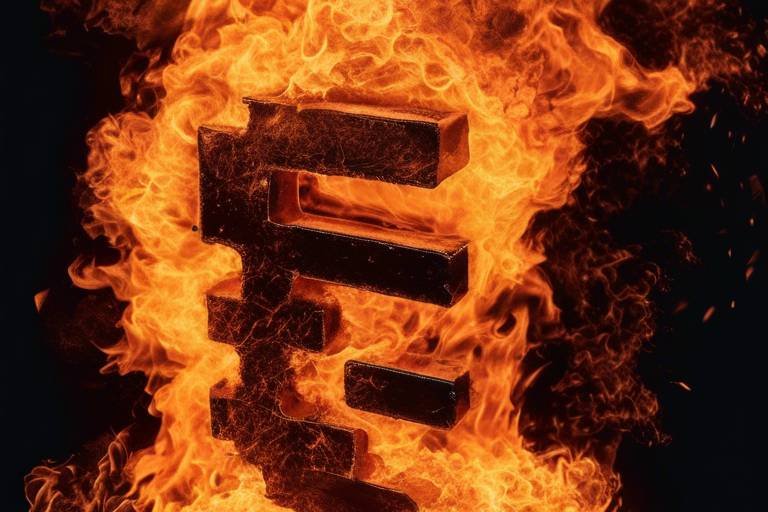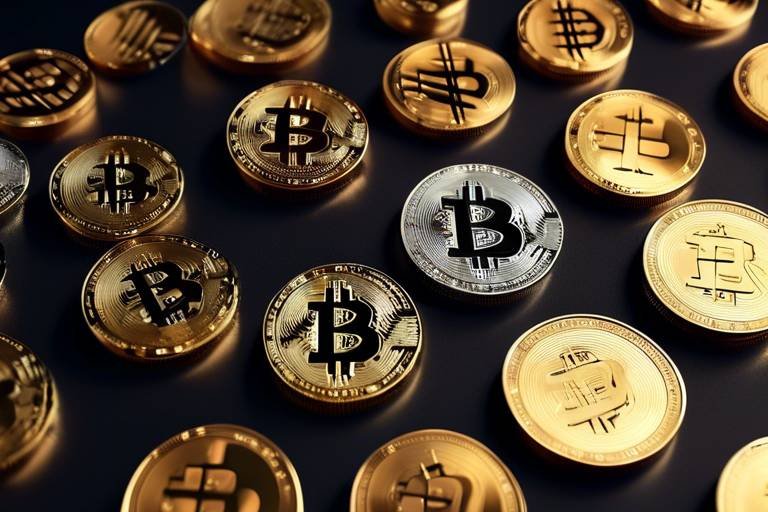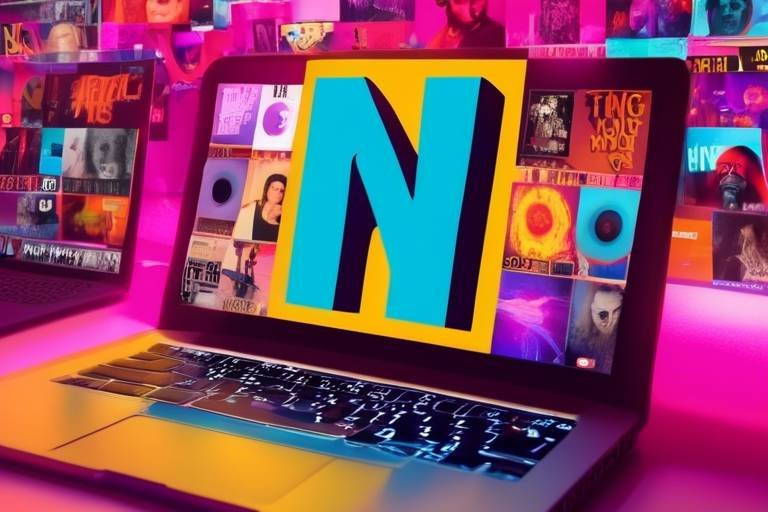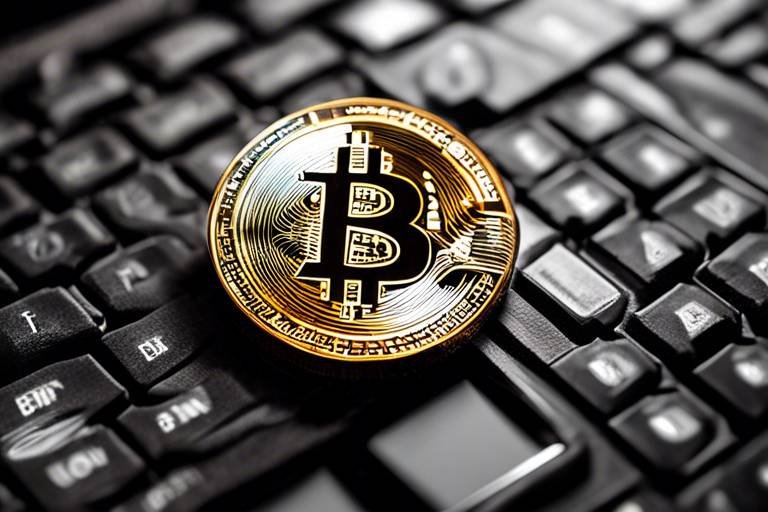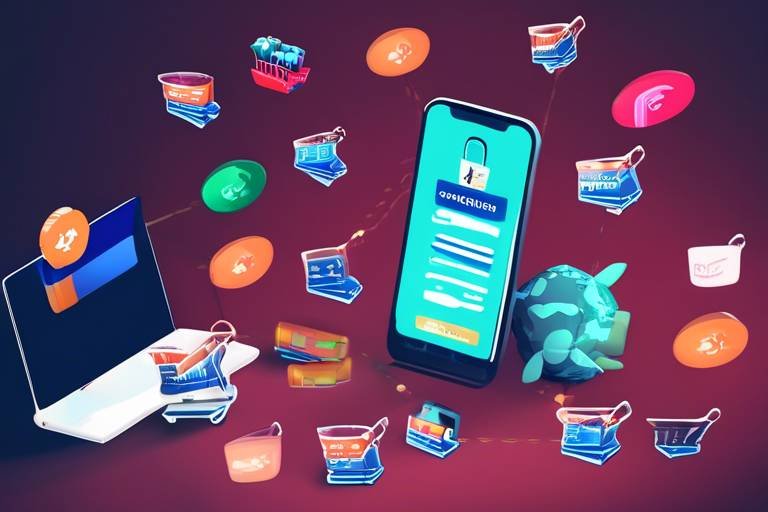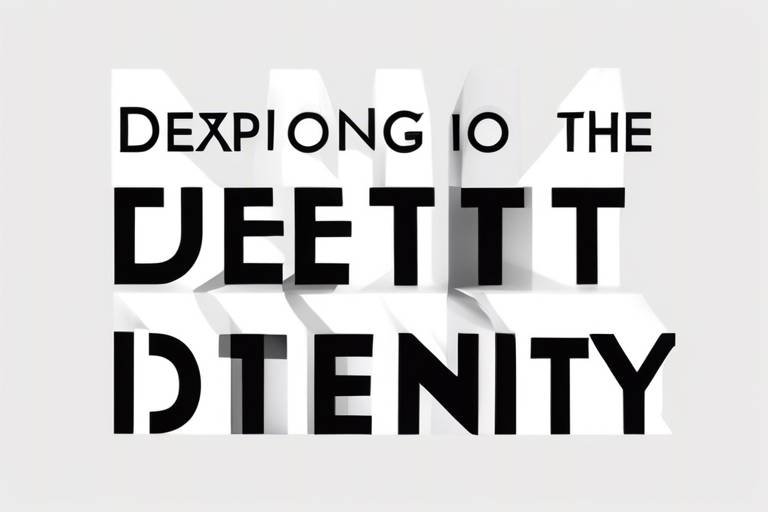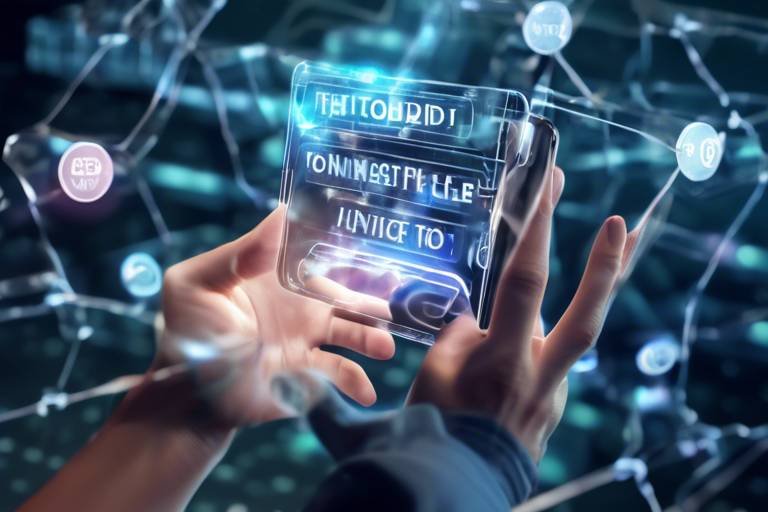Understanding the Impact of Token Burn Mechanisms
In the ever-evolving world of cryptocurrency, token burn mechanisms have emerged as a fascinating and impactful strategy that can significantly influence market dynamics. But what exactly does it mean to "burn" tokens? At its core, token burning involves the permanent removal of tokens from circulation, which can lead to a variety of outcomes, especially concerning supply and demand. Imagine a scenario where a company decides to reduce the number of shares available in the market; this can create a sense of scarcity that often drives up the value of the remaining shares. Similarly, in the crypto realm, burning tokens can create a buzz that attracts investors, enhances token value, and fosters a sense of community involvement. However, it's not all sunshine and rainbows—there are complexities and potential pitfalls that investors must navigate.
Understanding the significance of token burns is crucial for anyone looking to invest in cryptocurrencies or engage with blockchain projects. As we delve deeper into the mechanics of token burning, we will explore how these mechanisms play a role in shaping market sentiment, investor confidence, and overall project sustainability. From scheduled burns that generate excitement to community-driven initiatives that foster engagement, the implications of these actions are profound. In the sections that follow, we will dissect the various types of token burns, their benefits, potential risks, and what the future may hold for this intriguing aspect of the crypto landscape.
Token burning is more than just a buzzword; it's a strategic move that can alter the landscape of a cryptocurrency project. By permanently removing tokens from circulation, projects can create a sense of scarcity that often leads to increased demand. This process is akin to a limited edition product release; the fewer items available, the more desirable they become. In the cryptocurrency market, this principle holds true, as investors often view tokens with reduced supply as more valuable. Understanding token burns is essential for grasping their implications in investment strategies, as they can directly impact market behavior and investor sentiment.
Token burn mechanisms vary widely, reflecting the diverse strategies employed by different projects. Some projects implement scheduled token burns, which occur at predetermined intervals, often outlined in a project’s roadmap. This predictable approach can significantly affect investor confidence and market behavior. On the other hand, community-driven token burns rely on collective decisions made by token holders, introducing an element of unpredictability that can enhance community engagement but also lead to market volatility. Understanding these operational frameworks is crucial for investors looking to navigate the complex world of tokenomics.
Scheduled token burns are a fascinating aspect of tokenomics. They occur at specific times, often announced well in advance to build anticipation among investors. This predictability can create a sense of excitement in the market. For instance, when a project announces a burn date, it can lead to increased trading activity as investors rush to buy tokens before the burn, hoping to capitalize on the anticipated price increase. The impact on market sentiment can be profound, as the excitement surrounding a scheduled burn often translates into heightened demand and price volatility. It’s a classic case of supply and demand at play, and understanding these dynamics is essential for predicting market reactions.
The excitement generated by scheduled burns can lead to a positive feedback loop, where increased demand drives prices up, attracting even more investors. This phenomenon is a testament to the power of market sentiment in the cryptocurrency space. However, it’s essential to recognize that this excitement can also lead to speculation and, in some cases, price manipulation. Investors should approach these scenarios with a healthy dose of skepticism and conduct thorough research before making decisions based solely on anticipated burns.
Several projects have successfully implemented scheduled token burns, providing valuable insights into effective strategies. For example, consider a project that announced a series of burns over the course of a year. Each burn event was accompanied by marketing efforts, community engagement, and transparent communication. The result? A steady increase in token value and a loyal investor base. Analyzing these case studies can help investors understand the potential outcomes of scheduled burns and how they can influence market performance.
In contrast to scheduled burns, community-driven token burns rely on the collective decision-making of token holders. This participatory approach can enhance community engagement, as holders feel a sense of ownership and responsibility for the project’s success. However, the unpredictability of community-driven burns can introduce volatility in market behavior. For instance, if a community decides to burn a significant portion of tokens without prior notice, it can lead to sudden price fluctuations. Investors must weigh the benefits of community involvement against the potential risks of unpredictability.
Token burning offers several potential benefits that can enhance the attractiveness of a project. One of the most significant advantages is the increase in token scarcity. By reducing the total supply of tokens, burning mechanisms can create a sense of scarcity that drives up demand. This fundamental economic principle plays a crucial role in token valuation, making it an essential consideration for investors.
When tokens are burned, the total supply decreases, leading to a natural increase in scarcity. This scarcity can create a sense of urgency among investors, driving them to purchase tokens before they become even rarer. It’s a classic case of supply and demand at play, and the psychological impact of scarcity cannot be underestimated. Investors often perceive scarce tokens as more valuable, leading to increased interest and investment.
Projects that implement token burns often signal a commitment to their ecosystem, enhancing credibility and trust among investors. This perceived reliability can lead to increased investment and community support. When investors see that a project is actively managing its token supply through burns, it fosters a sense of confidence in the project’s long-term viability.
While token burning can offer numerous benefits, it also carries inherent risks that investors must consider. One of the primary concerns is the potential for market manipulation. Token burns can create artificial scarcity, leading to price fluctuations that may not accurately reflect the token's intrinsic value. Understanding these risks is essential for investors to navigate the complexities of token economics.
Token burns can be exploited as a tool for market manipulation, creating a false sense of scarcity that can mislead investors. It’s crucial for investors to remain vigilant and conduct thorough research before making decisions based solely on token burn announcements. Transparency and accountability are key factors in determining whether a token burn is a genuine effort to enhance value or a tactic for manipulation.
Burning tokens can lead to unforeseen outcomes, such as decreased liquidity or investor dissatisfaction. For example, if a project burns a significant number of tokens without proper communication, it can lead to confusion and frustration among investors. Analyzing these potential pitfalls helps investors make informed decisions and navigate the complexities of token economics.
As the cryptocurrency landscape continues to evolve, token burn mechanisms are likely to adapt as well. Innovations in blockchain technology and changes in market dynamics may lead to new approaches to token burning. Investors should stay informed about emerging trends and be prepared to adjust their strategies accordingly. The future of token burns holds exciting possibilities, and understanding these mechanisms will be essential for navigating the ever-changing crypto environment.
- What is token burning? Token burning is the permanent removal of tokens from circulation, which can influence scarcity and value.
- How does token burning affect token value? By reducing the total supply, token burning can create scarcity, potentially driving up demand and value.
- What are the risks associated with token burning? Risks include market manipulation and unintended consequences such as decreased liquidity.
- Are there successful examples of token burning? Yes, many projects have successfully implemented scheduled token burns, resulting in increased investor interest and market performance.
- How can I stay informed about token burns? Following project updates, engaging with community discussions, and conducting thorough research can help you stay informed.
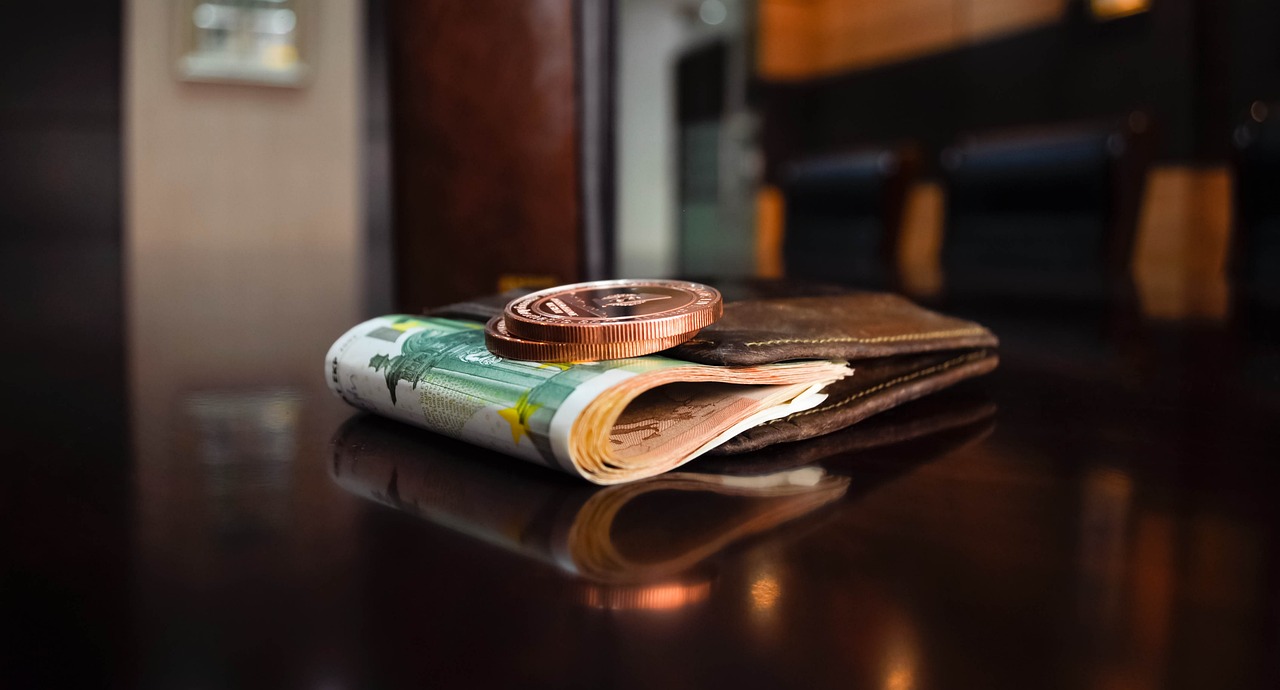
The Concept of Token Burning
Token burning is a fascinating concept that plays a pivotal role in the cryptocurrency ecosystem. Essentially, it involves the permanent removal of tokens from circulation. This act is not just a simple deletion; it significantly impacts the overall dynamics of supply and demand, which can, in turn, influence a token's value. Imagine a limited-edition collectible card: the fewer cards that exist, the more valuable each one becomes. Similarly, when tokens are burned, their scarcity increases, potentially driving up demand among investors and collectors alike.
Understanding token burning is crucial for anyone looking to navigate the complex waters of cryptocurrency investments. It's not merely a gimmick; it’s a strategic move that can reshape the market landscape. When a project commits to burning tokens, it sends a signal to the market that it is serious about its long-term viability and value proposition. This commitment can enhance investor confidence, making them more likely to hold onto their tokens rather than sell them off at the first sign of market fluctuation.
The mechanics of token burning can vary significantly across different projects. Some may implement a burning mechanism as part of their initial tokenomics, while others might introduce it as a response to market conditions or community feedback. This flexibility allows projects to tailor their burning strategies to best fit their goals and the expectations of their investors. For instance, a project might decide to burn a certain percentage of tokens after a successful fundraising round, creating a buzz and reinforcing the project's credibility.
In addition to enhancing scarcity, token burning can also serve as a tool for community engagement. When token holders are involved in the decision-making process regarding burns, it fosters a sense of ownership and responsibility within the community. This participatory approach can lead to a stronger bond between the project and its investors, ultimately benefiting both parties. However, it is essential to recognize that while token burning can have numerous advantages, it is not without its risks and challenges.
To summarize, token burning is a critical mechanism in the cryptocurrency market that can influence scarcity, demand, and investor sentiment. By understanding how token burning works and its implications, investors can make more informed decisions, positioning themselves strategically in a rapidly evolving landscape. Whether you're a seasoned investor or a newcomer, grasping the concept of token burning is essential for navigating the exciting world of digital assets.

Mechanics of Token Burn
Token burn mechanisms can vary widely, and understanding these differences is essential for grasping their impact on the cryptocurrency market. Essentially, token burning refers to the deliberate process of removing tokens from circulation, which can significantly alter the tokenomics of a project. The mechanics behind these burns can be divided into a few key categories: scheduled burns and community-driven burns. Each method has its own operational framework and implications for both the market and investors.
Scheduled token burns are typically pre-planned events that occur at specific intervals, often laid out in a project's roadmap. These burns are announced in advance, allowing investors to anticipate their occurrence. This predictability can create a sense of excitement and urgency among investors, potentially driving demand and influencing price movements. For instance, when a project publicly announces a scheduled burn, it often leads to increased trading activity as investors speculate on the resulting scarcity.
On the other hand, community-driven token burns rely on the collective decisions of token holders. In this scenario, the community can vote on whether to burn a certain amount of tokens, often based on project performance or milestones. This participatory approach fosters a sense of ownership and engagement within the community. However, it can also introduce unpredictability, as the timing and scale of burns depend on community consensus. Such dynamics can lead to fluctuations in market behavior, making it crucial for investors to stay informed about community sentiment and engagement.
To better understand these mechanics, let’s take a look at the following table that outlines the key differences between scheduled and community-driven token burns:
| Feature | Scheduled Token Burns | Community-Driven Token Burns |
|---|---|---|
| Planning | Pre-determined intervals | Based on community votes |
| Predictability | High | Variable |
| Investor Engagement | Can create anticipation | Enhances community involvement |
| Market Impact | Often leads to price spikes | Can be unpredictable |
In summary, the mechanics of token burn are not just about removing tokens from circulation; they are deeply intertwined with market psychology and community dynamics. Understanding these mechanics can empower investors to make informed decisions and anticipate market reactions. Whether through scheduled burns that create excitement or community-driven initiatives that foster engagement, the implications of token burning are profound and far-reaching.
- What is token burning? Token burning is the process of permanently removing tokens from circulation to increase scarcity and potentially enhance value.
- How does scheduled token burning work? Scheduled token burns occur at predetermined intervals, often outlined in a project's roadmap, creating predictability for investors.
- What are the risks associated with token burning? Risks include market manipulation and unintended consequences, such as decreased liquidity or investor dissatisfaction.
- Can community-driven burns be effective? Yes, they can enhance community engagement but may introduce unpredictability in market behavior.
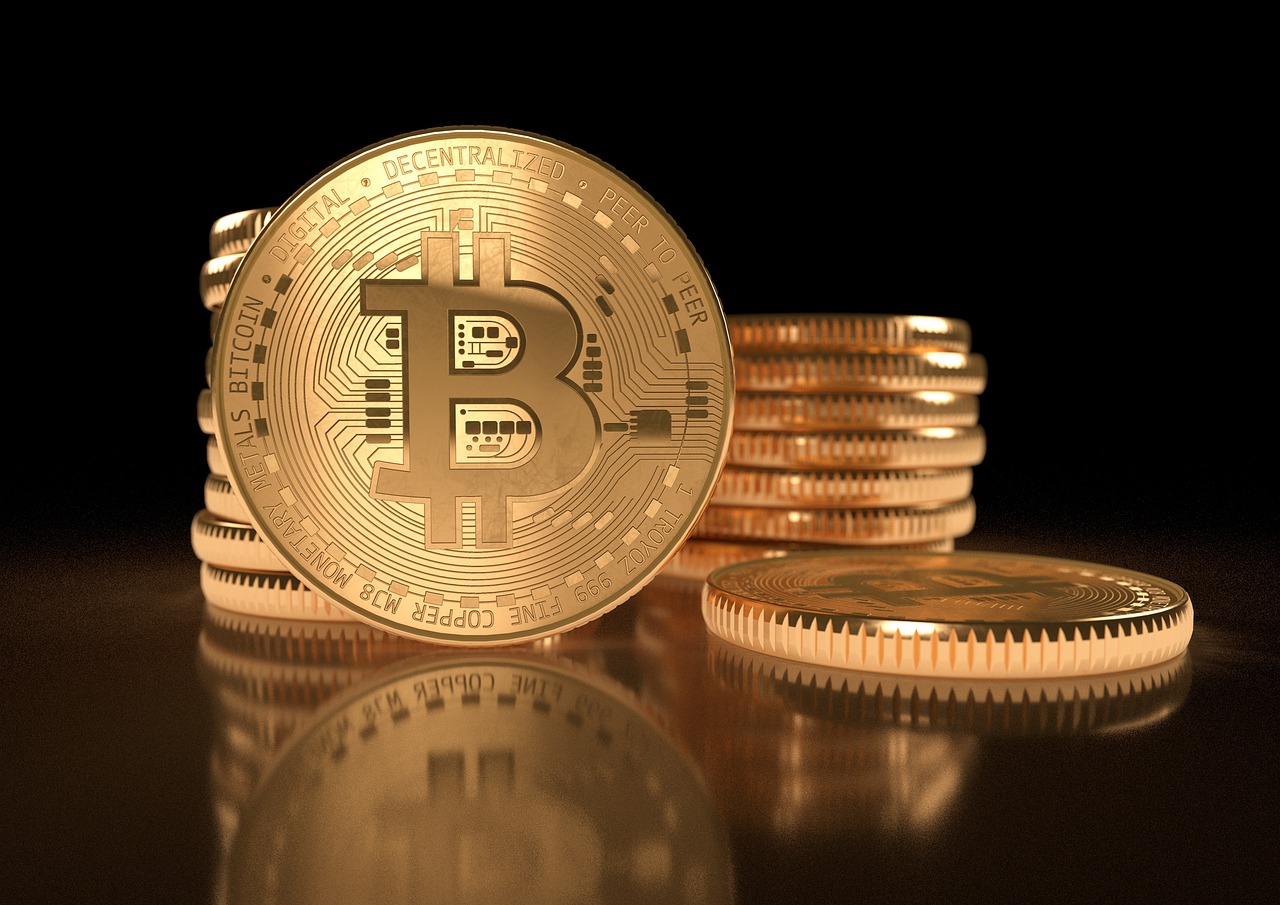
Scheduled Token Burns
Scheduled token burns are a fascinating aspect of the cryptocurrency world that can significantly influence market dynamics. These burns occur at predetermined intervals and are often detailed in a project's roadmap, giving investors a clear understanding of when and how many tokens will be removed from circulation. This predictability is not just a technical detail; it plays a crucial role in shaping investor sentiment and market behavior. Imagine being able to anticipate a scarcity event—it's like knowing when a limited edition product will be released. This sense of anticipation can create a buzz in the community, driving demand and potentially increasing the value of the remaining tokens.
One of the most compelling features of scheduled burns is their ability to build investor confidence. When a project commits to a regular burning schedule, it sends a message that the team is serious about managing supply and enhancing the token's value. This can lead to a more stable price trajectory, as investors feel reassured knowing that the total supply is being actively managed. For instance, if a project announces a monthly burn of a certain percentage of its tokens, investors may be more inclined to hold onto their assets, anticipating a future increase in value due to reduced supply.
To illustrate the impact of scheduled token burns, let’s consider a hypothetical project called CryptoGem. CryptoGem has announced a quarterly burn of 5% of its total supply. Here’s a simplified table to show how this might affect the token's supply over a year:
| Quarter | Total Supply Before Burn | Tokens Burned | Total Supply After Burn |
|---|---|---|---|
| Q1 | 1,000,000 | 50,000 | 950,000 |
| Q2 | 950,000 | 47,500 | 902,500 |
| Q3 | 902,500 | 45,125 | 857,375 |
| Q4 | 857,375 | 42,868 | 814,507 |
As shown in the table, each quarter, CryptoGem reduces its total supply, creating a cumulative effect on scarcity. Over time, this can lead to a significant increase in the token's perceived value, especially if demand remains constant or increases. However, it’s not just about the numbers; the psychology of investors plays a pivotal role. When they see that tokens are being actively burned, it can generate excitement and a sense of urgency to buy before the next burn occurs.
Moreover, scheduled token burns can also help in controlling inflation within a cryptocurrency ecosystem. By systematically reducing supply, projects can prevent the devaluation of their tokens, which is a common concern in the crypto space. This strategy can be particularly effective in projects that have a large initial supply, as it helps to create a balance between supply and demand over time.
In conclusion, scheduled token burns are more than just a technical mechanism; they are a powerful tool for shaping market sentiment and influencing investor behavior. By creating a predictable pattern of scarcity, these burns can enhance the credibility of a project, foster community engagement, and ultimately drive demand for the token. As investors, understanding the implications of these scheduled burns can help you make more informed decisions in the ever-evolving landscape of cryptocurrency.
- What is a token burn? A token burn is the process of permanently removing tokens from circulation, often to reduce supply and increase scarcity.
- How do scheduled token burns work? Scheduled token burns occur at predetermined intervals, where a specific percentage of tokens is burned, impacting supply and potentially increasing value.
- Are token burns beneficial for investors? Yes, token burns can create scarcity and enhance the perceived value of a token, which can be attractive to investors.
- Can token burns be manipulated? Yes, there are concerns that token burns can be used as a tool for market manipulation, creating artificial scarcity.
- What should investors consider before investing in projects with token burns? Investors should evaluate the project's overall strategy, the frequency and amount of burns, and the potential risks involved.

Impact on Market Sentiment
The impact of scheduled token burns on market sentiment is nothing short of fascinating. When a project announces a token burn, it often ignites a wave of excitement among investors. This anticipation can create a buzz that ripples through the community, driving demand and influencing price movements. Investors begin to speculate on how the reduced supply will affect the token's value, leading to a flurry of trading activity. But why does this happen? It's all about the psychology of scarcity. When people perceive that there will be fewer tokens available, they may rush to buy before prices increase, which can lead to a self-fulfilling prophecy of rising prices.
Moreover, the timing of these burns can play a significant role in shaping market sentiment. For instance, if a token burn is scheduled after a period of stagnant or declining prices, it can serve as a catalyst for a price rebound. Investors often view these burns as a sign of a project's commitment to maintaining the token's value, which can enhance their confidence and encourage further investment. This cycle of anticipation and reaction creates a dynamic environment where market sentiment can shift rapidly, sometimes catching even seasoned investors off guard.
However, it’s important to note that while scheduled burns can create positive sentiment, they can also lead to volatility. If the market reacts too enthusiastically, it may inflate prices to unsustainable levels, leading to potential corrections when the initial excitement fades. In this sense, understanding the balance between excitement and caution is crucial for investors navigating these waters.
To illustrate this point, consider the following table that summarizes the potential effects of scheduled token burns on market sentiment:
| Market Sentiment Factor | Positive Impact | Negative Impact |
|---|---|---|
| Anticipation | Increased buying interest | Overvaluation risks |
| Investor Confidence | Strengthened trust in the project | Panic selling if expectations aren't met |
| Price Volatility | Potential for rapid price increases | Risk of sharp corrections |
In conclusion, the impact of scheduled token burns on market sentiment is multifaceted. While they can generate excitement and confidence, they also carry the risk of creating volatility and unrealistic expectations. Investors must remain vigilant, balancing their enthusiasm with a critical eye on market dynamics.
- What is a token burn? A token burn is the process of permanently removing tokens from circulation, which can affect scarcity and value.
- How do scheduled burns impact market behavior? Scheduled burns can create anticipation, potentially driving demand and influencing price volatility.
- Are there risks associated with token burns? Yes, risks include market manipulation and unintended consequences such as decreased liquidity.
- How should investors approach token burns? Investors should balance excitement with caution, considering both potential benefits and risks.

Case Studies of Successful Scheduled Burns
When it comes to understanding the dynamics of scheduled token burns, examining real-world examples can provide invaluable insights. One of the most notable case studies is the Binance Coin (BNB), which has implemented a systematic token burn mechanism since its inception. Binance commits to burning a portion of BNB tokens every quarter, based on the trading volume on its exchange. This practice not only reduces the total supply but also creates a sense of anticipation among investors, as they eagerly await the announcements of each burn. The result? An impressive increase in demand and a significant boost in price, demonstrating how a well-structured burn can enhance market sentiment.
Another remarkable example is the Ethereum (ETH) network's transition to a proof-of-stake model with the Ethereum Improvement Proposal (EIP) 1559. This upgrade introduced a mechanism that permanently removes a portion of transaction fees from circulation, effectively burning ETH. The scheduled burns that happen with each transaction have led to a noticeable decrease in the circulating supply of ETH, contributing to the overall scarcity of the asset. As a result, many investors view ETH as a deflationary asset, which has sparked increased interest and investment in the ecosystem.
To further illustrate the impact of scheduled burns, let's take a look at a summary of these successful case studies:
| Project | Burn Mechanism | Impact on Market |
|---|---|---|
| Binance Coin (BNB) | Quarterly burns based on trading volume | Increased demand and price appreciation |
| Ethereum (ETH) | Burning of transaction fees | Perceived as deflationary, attracting more investors |
These case studies not only highlight the effectiveness of scheduled burns but also showcase how they can create a positive feedback loop between scarcity and demand. Investors are more likely to engage with projects that demonstrate a commitment to reducing supply, as it signals a proactive approach to maintaining token value. However, it’s essential to remain cautious; while these examples shine a light on successful strategies, they also remind us that the cryptocurrency market can be unpredictable. Hence, understanding the mechanics behind token burns is crucial for making informed investment decisions.
As the cryptocurrency landscape continues to evolve, the lessons learned from these case studies will undoubtedly influence future projects. Investors should keep an eye on upcoming projects that incorporate similar burn mechanisms, as they may offer unique opportunities for growth and engagement in the ever-changing crypto ecosystem.
- What is a token burn? Token burn is the process of permanently removing tokens from circulation, which can help increase scarcity and potentially enhance value.
- How does a scheduled token burn work? Scheduled token burns are predetermined events where a specific amount of tokens is burned at regular intervals, often outlined in a project's roadmap.
- What are the benefits of token burning? Token burning can lead to increased scarcity, enhanced project credibility, and potentially higher token values, attracting more investors.
- Are there risks associated with token burning? Yes, token burning can lead to market manipulation and unintended consequences, such as decreased liquidity or investor dissatisfaction.
- Can token burns affect market sentiment? Absolutely! Scheduled token burns can create anticipation and excitement among investors, influencing their buying behavior and overall market dynamics.

Community-Driven Token Burns
Community-driven token burns represent a fascinating aspect of the cryptocurrency landscape, where the power of the community is harnessed to influence the fate of a token. Unlike scheduled burns that are predetermined by the project developers, community-driven burns rely on the collective decisions made by token holders. This participatory approach not only fosters a sense of ownership among investors but also enhances engagement within the community. Imagine a group of friends deciding to pool their resources to buy a rare collectible; the excitement and camaraderie that come from making a joint decision can significantly enhance the experience. Similarly, community-driven burns create a shared purpose among token holders, as they unite to influence the token's supply dynamics.
One of the most compelling aspects of community-driven burns is the unpredictability they introduce into the market. While this can be exhilarating, it also brings a level of uncertainty that can affect market behavior. For instance, if a community decides to burn a significant portion of tokens, the immediate effect could be a surge in demand due to perceived scarcity. However, the lack of predictability can also lead to volatility, as market participants react to community decisions in real-time. This dynamic interplay between community sentiment and market response can create a rollercoaster effect, making it essential for investors to stay informed and engaged.
Moreover, community-driven token burns often manifest in various forms, such as voting mechanisms or proposals put forth by community members. For example, a project might implement a governance model where token holders can vote on whether to initiate a burn event. This democratic approach not only empowers investors but also reinforces the notion that the project is genuinely community-centric. However, it’s crucial to understand that while this method promotes engagement, it can also lead to conflicts or differing opinions within the community. Just like a group project in school, differing views can either lead to innovative solutions or prolonged debates that stall progress.
Ultimately, the success of community-driven token burns hinges on the strength and cohesion of the community itself. A well-organized and motivated community can drive significant positive outcomes, such as increased token value and heightened interest from potential investors. Conversely, a fragmented community may struggle to make impactful decisions, potentially leading to stagnation or even decline in token value. Therefore, it’s essential for projects to cultivate a robust community culture, where communication and collaboration thrive.
In summary, community-driven token burns are a double-edged sword. They offer a unique opportunity for investors to engage actively with the project, potentially leading to increased demand and value. However, the unpredictability and the need for consensus can introduce risks that investors should carefully consider. As the cryptocurrency ecosystem continues to evolve, understanding the nuances of community-driven initiatives will be vital for navigating this exciting yet complex landscape.
- What is a token burn? A token burn is the process of permanently removing tokens from circulation, which can increase scarcity and potentially drive up value.
- How do community-driven burns work? Community-driven burns rely on collective decisions made by token holders, often through voting or proposals, to determine when and how many tokens to burn.
- What are the benefits of community-driven burns? These burns can enhance community engagement, create a sense of ownership, and potentially increase the token's value through perceived scarcity.
- Are there risks associated with community-driven burns? Yes, the unpredictability of community decisions can lead to market volatility and conflicts within the community.
- How can I participate in a community-driven burn? Participation typically involves holding the project's tokens and engaging in governance mechanisms, such as voting on burn proposals.

Benefits of Token Burning
Token burning is more than just a buzzword in the cryptocurrency world; it plays a pivotal role in shaping the dynamics of token economies. One of the most significant benefits of token burning is the increased scarcity it creates. Imagine walking into a store where there are only a few items left on the shelf. The limited availability often drives up demand, right? Similarly, when tokens are burned, the total supply decreases, leading to a potential increase in value. This principle of scarcity is fundamental in economics and resonates deeply in the crypto market.
Moreover, token burning can enhance a project's credibility. When a project commits to burning tokens, it sends a strong message to investors about its dedication to maintaining a healthy ecosystem. This commitment often translates into increased trust and reliability, which are crucial for attracting and retaining investors. Think of it as a badge of honor—projects that burn tokens often showcase their seriousness about long-term sustainability, making them more appealing to potential backers.
Another noteworthy advantage is the potential for creating a loyal community. When token holders are involved in the decision-making process regarding burns, it fosters a sense of ownership and belonging. Community-driven token burns can lead to increased engagement and participation, as holders feel their voices matter. This participatory approach not only strengthens community ties but also enhances the overall ecosystem’s robustness.
In addition, the act of burning tokens can lead to price stabilization. By reducing the circulating supply, token burns can help mitigate extreme price fluctuations. This stabilization is beneficial not just for investors but also for the project itself, as it creates a more predictable market environment. However, it’s important to note that while token burning can contribute to price stabilization, it’s not a guaranteed solution and should be viewed as part of a broader strategy.
To summarize the benefits of token burning, here’s a quick table that encapsulates the key points:
| Benefit | Description |
|---|---|
| Increased Scarcity | Reduces total supply, potentially increasing token value. |
| Enhanced Credibility | Signals commitment to the ecosystem, attracting more investors. |
| Loyal Community | Encourages engagement and participation among token holders. |
| Price Stabilization | Helps mitigate extreme price fluctuations by reducing circulating supply. |
Ultimately, while token burning presents numerous advantages, it’s essential to approach it with a balanced perspective. The benefits can be substantial, but they must be weighed against the potential risks and drawbacks that come with such mechanisms. As the cryptocurrency landscape continues to evolve, understanding the nuanced impacts of token burning will be crucial for investors and project developers alike.
Q: What exactly is token burning?
A: Token burning is the process of permanently removing tokens from circulation, which can impact their scarcity and value.
Q: How does token burning affect the price of a cryptocurrency?
A: By reducing the total supply of tokens, burning can create scarcity, which may lead to an increase in demand and, consequently, the price.
Q: Are there any risks associated with token burning?
A: Yes, token burning can lead to market manipulation and unintended consequences, such as decreased liquidity or investor dissatisfaction.
Q: How can I find out if a project has a token burn mechanism?
A: Most projects will outline their tokenomics, including any planned burns, in their whitepapers or official announcements.

Increasing Token Scarcity
When we talk about , we're diving into one of the most fundamental principles of economics: supply and demand. Imagine a limited edition sneaker that everyone wants. The fewer pairs available, the more valuable each one becomes. This is precisely how token burning works in the cryptocurrency world. By reducing the total supply of tokens through burning mechanisms, projects can artificially create a sense of scarcity that can drive up demand and, consequently, the token's value.
Token burning can take many forms, but the end goal is always the same: to decrease the circulating supply. When tokens are burned, they are permanently removed from circulation, never to be used again. This can create a psychological effect among investors, who may perceive the remaining tokens as more valuable simply because there are fewer of them available. This scarcity can lead to increased interest and investment, propelling the token's price upward.
To illustrate this concept further, let's consider a hypothetical scenario involving a cryptocurrency called CryptoX. Initially, there are 1 million tokens in circulation. If the project decides to burn 200,000 tokens in a scheduled event, the total supply is reduced to 800,000 tokens. This reduction can lead to several important outcomes:
| Before Burn | After Burn |
|---|---|
| 1,000,000 Tokens | 800,000 Tokens |
| Potential Price: $1.00 | Potential Price: $1.25 (Hypothetical) |
As shown in the table, the potential price of the token could increase from $1.00 to $1.25 after the burn. While this is a simplified example, it highlights the principle that reducing supply can lead to a higher perceived value. However, it's essential to note that this isn't a guaranteed outcome; market conditions, investor sentiment, and overall demand play significant roles in determining token prices.
Moreover, increasing token scarcity through burning can also foster a sense of community and loyalty among investors. When holders know that their tokens are becoming rarer, they may be more inclined to hold onto them, anticipating future value increases. This can create a positive feedback loop, where the anticipation of scarcity drives demand, which in turn drives up the price, further enhancing the perception of value.
However, while the allure of scarcity can be enticing, it's crucial for investors to approach token burning with a balanced perspective. Not all projects that implement burning mechanisms are created equal. Some may use burning as a genuine strategy to enhance value, while others might leverage it as a marketing gimmick. Therefore, due diligence is essential. Investors should always analyze the underlying fundamentals of the project and its long-term viability beyond just the burning events.
In conclusion, increasing token scarcity through burning mechanisms can significantly impact a cryptocurrency's value and market dynamics. While it creates an exciting environment for potential price appreciation, it's vital for investors to remain informed and cautious. Understanding the nuances of tokenomics and the specific strategies employed by projects can lead to more informed investment decisions.
- What is token burning? Token burning is the process of permanently removing tokens from circulation to reduce supply and potentially increase value.
- How does token scarcity affect value? Increased scarcity can lead to higher demand and, consequently, a rise in value as fewer tokens are available.
- Are all token burns beneficial? Not necessarily. While some burns can enhance value, others may be used as marketing tactics without substantial backing.
- How can I find out if a token burn is legitimate? Conduct thorough research on the project, its team, and its overall strategy to assess the legitimacy of its token burn initiatives.
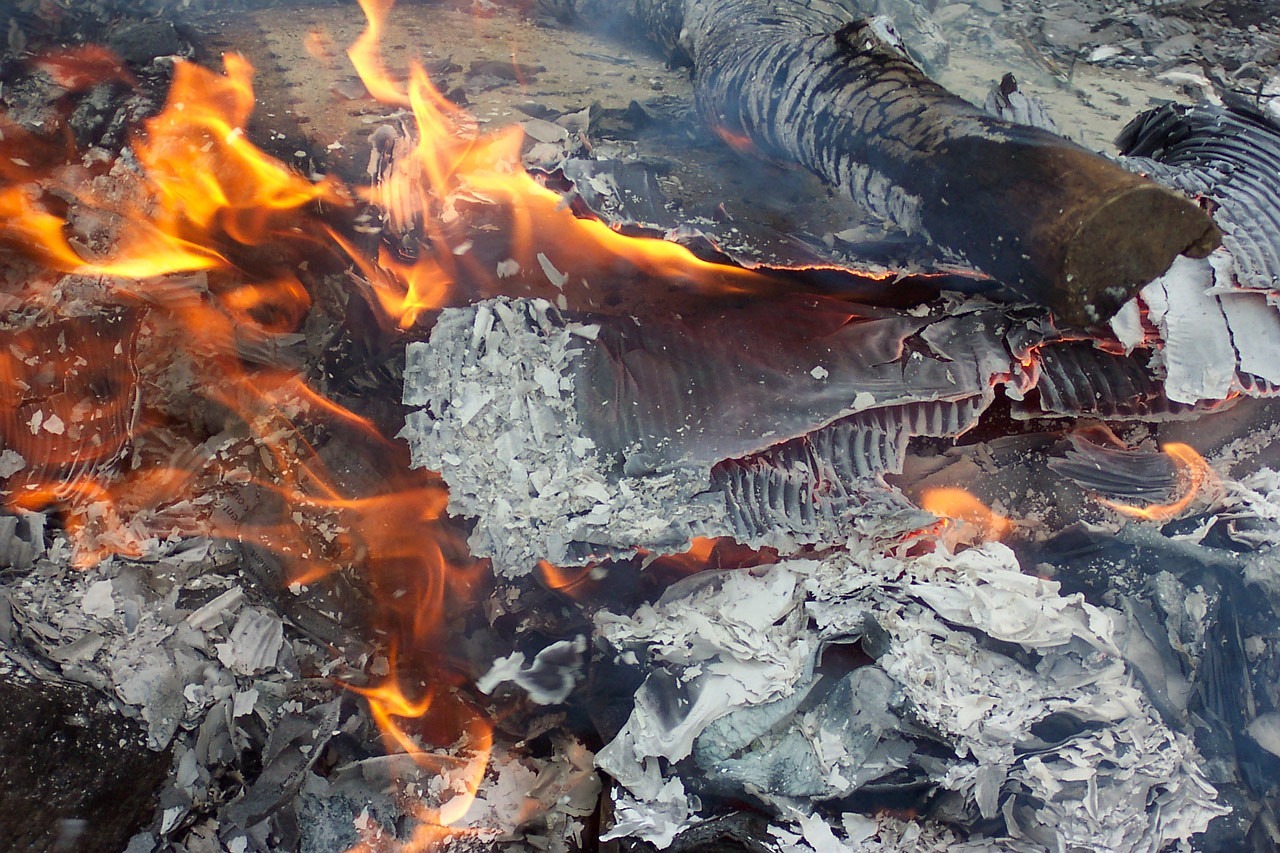
Enhancing Project Credibility
In the ever-evolving world of cryptocurrency, credibility is a currency of its own. When a project implements token burning, it sends a strong message to the community: they are committed to maintaining the health and sustainability of their ecosystem. This commitment can significantly enhance the project's credibility, making it more attractive to both current and potential investors.
But how does token burning actually boost credibility? For starters, it demonstrates a proactive approach to tokenomics. By reducing the total supply of tokens, projects can create a more favorable supply-demand dynamic. This action not only signals confidence in the project's future but also reassures investors that the team is taking steps to prevent inflationary pressures that could devalue their holdings. When investors see a project actively working to improve its economic model, it fosters a sense of trust and reliability.
Moreover, projects that engage in token burning often share their plans and results transparently with their community. This level of transparency is crucial in an industry where skepticism can run high. For instance, when a project outlines its burning schedule and the rationale behind it, it invites community participation and discussion. Investors feel more involved and valued, which can lead to increased loyalty and support.
To illustrate this point, consider the following table that compares projects with and without token burn mechanisms in terms of community trust and investment growth:
| Project Type | Community Trust Level | Investment Growth (1 Year) |
|---|---|---|
| With Token Burn | High | 150% |
| Without Token Burn | Moderate | 75% |
As shown in the table, projects that incorporate token burning tend to enjoy higher levels of community trust and significantly better investment growth over time. This correlation highlights the importance of token burn mechanisms as a tool for enhancing credibility.
Additionally, the act of burning tokens can create a narrative around scarcity and value. When a project can effectively communicate the benefits of token burning to its audience, it not only elevates its credibility but also positions itself as a thought leader within the industry. This thought leadership can attract media attention, partnerships, and further investment, creating a positive feedback loop that benefits the entire ecosystem.
In essence, token burning is more than just a mechanism for economic adjustment; it serves as a powerful tool for enhancing project credibility. By demonstrating commitment, transparency, and a proactive approach to managing token supply, projects can build trust and foster a loyal community. In a market where credibility can make or break a project, understanding and leveraging the power of token burning becomes essential for long-term success.
- What is token burning?
Token burning is the process of permanently removing tokens from circulation to reduce supply and potentially increase value. - How does token burning affect a cryptocurrency's value?
By decreasing the total supply of tokens, burning can create scarcity, which may drive up demand and value. - Are there risks associated with token burning?
Yes, risks include market manipulation and potential unintended consequences, such as decreased liquidity. - How can I identify projects that implement token burning?
Look for projects that outline their tokenomics clearly and have transparent communication regarding their burning mechanisms.

Risks and Drawbacks of Token Burning
While the concept of token burning can seem appealing, especially with its promise of increased scarcity and potential value appreciation, it's essential to look at the darker side of this mechanism. One of the primary concerns is the potential for market manipulation. In a world where information can travel faster than light, the ability to create artificial scarcity through token burns can lead to significant market distortions. For instance, a project might announce a burn to create hype and drive up prices, only to pull back later, leaving investors in a lurch. This kind of manipulation can erode trust in the market and lead to a volatile investment environment.
Another significant risk associated with token burning is the possibility of unintended consequences. When tokens are burned, the total supply decreases, which might seem beneficial at first glance. However, this reduction can lead to decreased liquidity. Imagine a scenario where a project burns a large portion of its tokens; suddenly, the remaining tokens become harder to trade. This decreased liquidity can create a bottleneck, making it challenging for investors to sell their holdings without affecting the price dramatically. Additionally, if the market perceives the burn as a desperate attempt to maintain value rather than a strategic move, it could lead to investor dissatisfaction and a loss of confidence in the project.
Moreover, the motivations behind token burns can sometimes be questioned. Are they genuinely aimed at enhancing value, or are they merely a tactic to distract from underlying issues within the project? This skepticism can create a cloud of doubt over the project, making investors wary. When the community starts to question the intentions behind token burns, it can lead to a negative feedback loop, where trust erodes, and the market reacts unfavorably.
In conclusion, while token burning can offer a pathway to increased value and scarcity, it is not without its risks. Investors must tread carefully, weighing the potential benefits against these significant drawbacks. Understanding the complexities of token economics and the implications of token burns is crucial for making informed investment decisions. Awareness of these risks can empower investors to navigate the tumultuous waters of the cryptocurrency market with greater confidence.
- What is token burning? Token burning refers to the process of permanently removing tokens from circulation to reduce supply and potentially increase value.
- Can token burning be manipulated? Yes, token burning can be used as a tool for market manipulation, creating artificial scarcity that may mislead investors.
- What are the benefits of token burning? Benefits include increased scarcity, enhanced token value, and improved project credibility.
- What are the risks of token burning? Risks include market manipulation, unintended consequences like decreased liquidity, and potential investor dissatisfaction.
- How can I assess the impact of a token burn? Analyzing the project’s roadmap, community sentiment, and historical market reactions can provide insights into the potential impact of a token burn.

Market Manipulation Concerns
When we delve into the world of cryptocurrency, one of the most pressing issues that arises is the potential for market manipulation. Token burning, while often seen as a beneficial mechanism to enhance scarcity and value, can also be exploited for less-than-honorable purposes. Imagine a scenario where a project team announces a token burn event. Investors, excited by the prospect of reduced supply, rush to buy in, driving up the price. However, what if this burn was merely a facade, orchestrated to create a false sense of urgency and inflate the token's value artificially? This is where the concerns of manipulation come into play.
Market manipulation can manifest in various forms, and token burns are not immune to these tactics. For instance, a project might execute a burn that is significantly less impactful than advertised or even none at all. This can lead to a situation where the perceived scarcity does not match the reality, resulting in disillusionment among investors once the truth surfaces. The aftermath can be disastrous, leading to a sharp decline in token value as trust erodes.
Moreover, the decentralized nature of many cryptocurrencies can complicate the regulatory landscape, making it challenging to monitor and control such manipulative practices. The absence of a central authority means that accountability can be murky. Investors may find themselves in a precarious position, unsure if their investments are genuinely influenced by market forces or manipulated by insiders. This uncertainty can lead to a lack of confidence in the overall market.
To further illustrate the potential risks associated with token burns, consider the following table that summarizes key concerns:
| Concern | Description |
|---|---|
| Artificial Scarcity | Token burns can create a perception of scarcity that may not reflect actual supply dynamics, misleading investors. |
| Investor Disillusionment | If burns do not yield the expected results, investors may lose faith in the project, leading to sell-offs. |
| Lack of Regulation | The decentralized nature of crypto markets can make it difficult to regulate and prevent manipulative practices. |
As an investor, it is crucial to remain vigilant and conduct thorough research before jumping into any project that employs token burn mechanisms. Understanding the underlying motives and the credibility of the team behind the project can help mitigate risks associated with market manipulation. Always ask yourself: Are the claims being made substantiated by data? Is there transparency in the token burn process? By maintaining a skeptical eye, you can better navigate the complexities of token economics and protect your investments.
- What is token burning? Token burning is the process of permanently removing tokens from circulation to reduce supply and potentially increase value.
- How can token burns manipulate the market? Token burns can create a false sense of scarcity, leading investors to make decisions based on misleading information.
- What should I look for in a project that implements token burns? Look for transparency, a solid roadmap, and a credible team behind the project to ensure the burn is legitimate.
- Are all token burns beneficial? Not necessarily. While they can create scarcity, they may also lead to market manipulation and investor dissatisfaction if not executed properly.

Unintended Consequences
While token burning is often touted as a mechanism to enhance scarcity and value, it can lead to some that investors should be aware of. One of the primary concerns is the potential for decreased liquidity. When tokens are burned, they are permanently removed from circulation, which can create a situation where there are not enough tokens available for trading. This scarcity might sound appealing at first, but it can actually lead to price volatility and make it challenging for investors to buy or sell tokens at their desired price.
Another unintended consequence is the possibility of investor dissatisfaction. If a project decides to implement a token burn without adequately communicating the reasoning behind it, or if the outcomes do not align with investor expectations, it can result in a backlash. Investors may feel that their interests are not being prioritized, leading to a loss of trust in the project. This is particularly true in the fast-paced world of cryptocurrency, where sentiment can shift rapidly.
Moreover, token burns can sometimes create an illusion of value. For example, if a project frequently announces token burns, it may generate hype and attract new investors. However, if the underlying fundamentals of the project do not support sustainable growth, this hype can quickly dissipate, leaving investors with tokens that have lost their value. Such situations can create a bubble effect, where the initial excitement leads to inflated prices followed by a sharp decline.
In addition to these issues, there is also the risk of market manipulation. Unscrupulous actors may exploit the concept of token burning to create artificial scarcity, driving up prices for their own gain. This manipulation can mislead unsuspecting investors and distort the true value of the tokens, complicating the investment landscape. As such, it's crucial for investors to conduct thorough research and remain vigilant about the motivations behind token burns.
Ultimately, while token burning can be a powerful tool for enhancing scarcity and signaling commitment to a project, it is not without its risks. Investors must weigh these potential unintended consequences against the perceived benefits. Understanding the broader implications of token burns can help investors make informed decisions and navigate the complexities of the cryptocurrency market.
- What is token burning? Token burning is the process of permanently removing tokens from circulation, which can affect their supply and demand dynamics.
- How does token burning impact the value of a cryptocurrency? By reducing the total supply of tokens, burning can create scarcity, potentially driving up demand and increasing value.
- Are there risks associated with token burning? Yes, risks include decreased liquidity, investor dissatisfaction, and the potential for market manipulation.
- Can token burns lead to price volatility? Absolutely. The removal of tokens from circulation can lead to sudden changes in price, especially if investor sentiment shifts.
- How can I protect myself as an investor when it comes to token burns? Conduct thorough research on the project, understand the reasons behind token burns, and be aware of market trends.
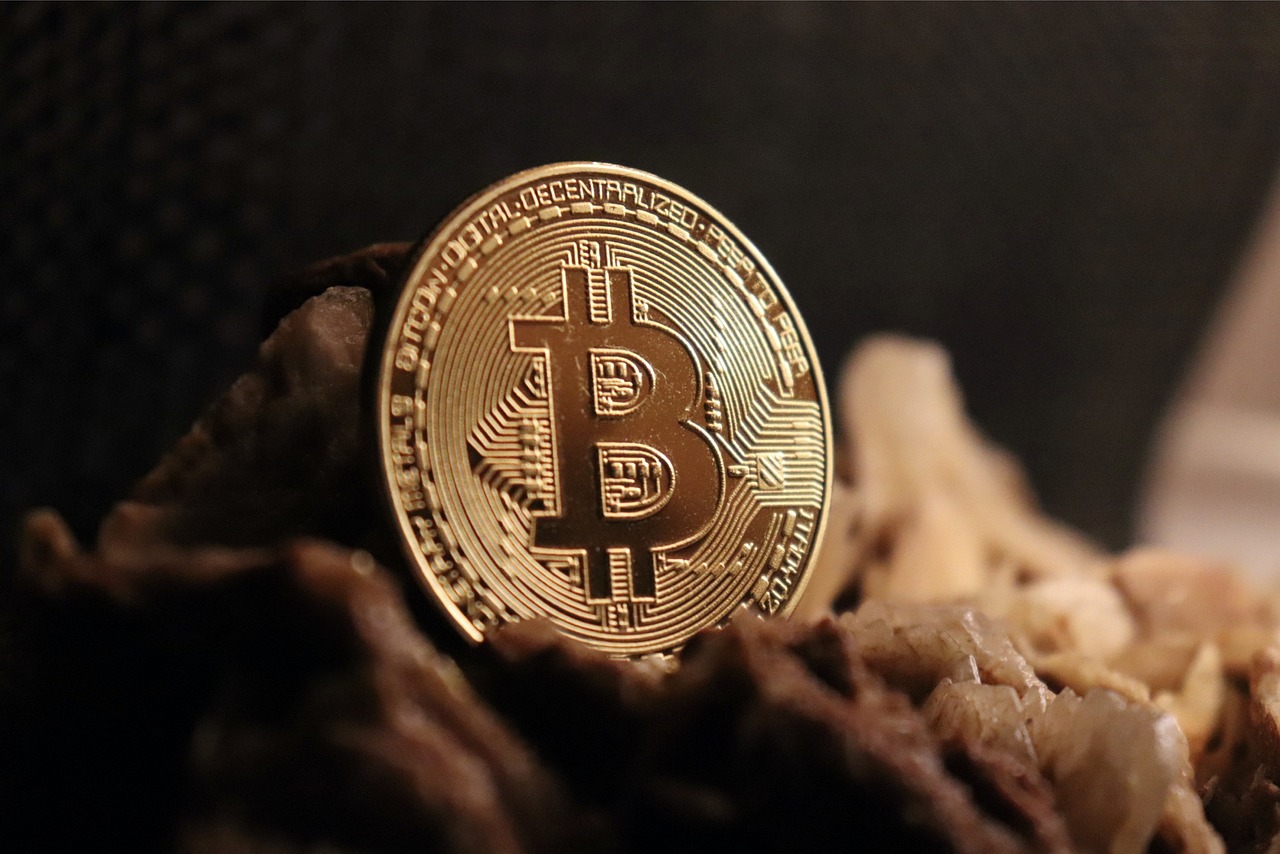
Future of Token Burn Mechanisms
As the cryptocurrency landscape continues to evolve at a staggering pace, the is poised to undergo significant transformations. With innovations emerging almost daily, these mechanisms will likely adapt to meet the changing demands of investors and the broader market. One of the most exciting prospects is the potential for more dynamic and flexible token burn strategies. Unlike the rigid scheduled burns of the past, future mechanisms may incorporate real-time data analytics to determine the optimal timing and volume of burns, enhancing their effectiveness in driving demand and value.
Moreover, the integration of smart contracts could revolutionize how token burns are executed. By automating the burn process based on specific conditions, such as market performance metrics or community voting outcomes, projects can create a more transparent and accountable approach to token economics. This could also help mitigate some of the risks associated with manual burns, such as market manipulation and unintended consequences.
Another intriguing trend is the potential for collaborative burns across different projects. Imagine a scenario where multiple cryptocurrency projects agree to burn a portion of their tokens in a coordinated effort. This could create a ripple effect, fostering a sense of community and shared purpose among various ecosystems. Such collaborations could not only enhance token scarcity but also strengthen investor confidence across the board.
In addition to these innovations, the regulatory landscape will undoubtedly play a crucial role in shaping the future of token burns. As governments and regulatory bodies become more involved in the cryptocurrency space, compliance will be essential. Projects that proactively engage with regulators and adhere to guidelines may find themselves at a competitive advantage, as they can implement token burns that are both effective and compliant.
As we look ahead, it's also essential to consider the impact of decentralized finance (DeFi) on token burn mechanisms. DeFi projects often rely on complex tokenomics that could benefit from innovative burn strategies. For instance, liquidity pools and yield farming could incorporate burn mechanisms to enhance token value and incentivize participation. This synergy between token burns and DeFi could lead to unprecedented growth opportunities for both sectors.
In conclusion, the future of token burn mechanisms is filled with potential and promise. As technology advances and market dynamics shift, we can expect to see more sophisticated and impactful burn strategies emerge. By keeping an eye on these developments, investors and enthusiasts alike can better navigate the exciting world of cryptocurrency and make informed decisions that align with their goals.
- What is a token burn? A token burn is the process of permanently removing tokens from circulation, which can increase scarcity and potentially enhance value.
- How do token burns affect market dynamics? Token burns can create anticipation among investors, influence supply and demand, and impact price volatility.
- Are there risks associated with token burning? Yes, token burns can lead to market manipulation and unintended consequences, such as decreased liquidity.
- What innovations can we expect in token burn mechanisms? Future innovations may include dynamic burn strategies, smart contract integrations, and collaborative burns across projects.
Frequently Asked Questions
- What is token burning in cryptocurrency?
Token burning is the process of permanently removing tokens from circulation, which can impact their scarcity and value. By reducing the total supply, it can create a sense of scarcity that may drive up demand among investors.
- How does token burning affect market dynamics?
Token burning can influence market dynamics by affecting supply and demand. Scheduled burns can create anticipation, leading to increased investor interest and potential price volatility, while community-driven burns may introduce unpredictability.
- What are the benefits of token burning?
Token burning can lead to increased scarcity, which may enhance the value of the remaining tokens. It also signals commitment from the project team, boosting credibility and trust among investors, which can foster long-term sustainability.
- Are there any risks associated with token burning?
Yes, token burning carries risks such as market manipulation, where artificial scarcity can mislead investors. Additionally, there can be unintended consequences like decreased liquidity or dissatisfaction among token holders if the burns are not managed well.
- What are scheduled token burns?
Scheduled token burns occur at predetermined intervals, often outlined in a project’s roadmap. This approach can help build investor confidence as they know when to expect the reduction in supply.
- How do community-driven token burns work?
Community-driven token burns rely on collective decisions made by token holders. This participatory approach can enhance engagement within the community but may also lead to unpredictability in market behavior.
- What is the future of token burn mechanisms?
The future of token burn mechanisms is likely to evolve with the cryptocurrency landscape. Innovations and trends may lead to new methods of burning tokens, impacting both investors and the broader ecosystem.

